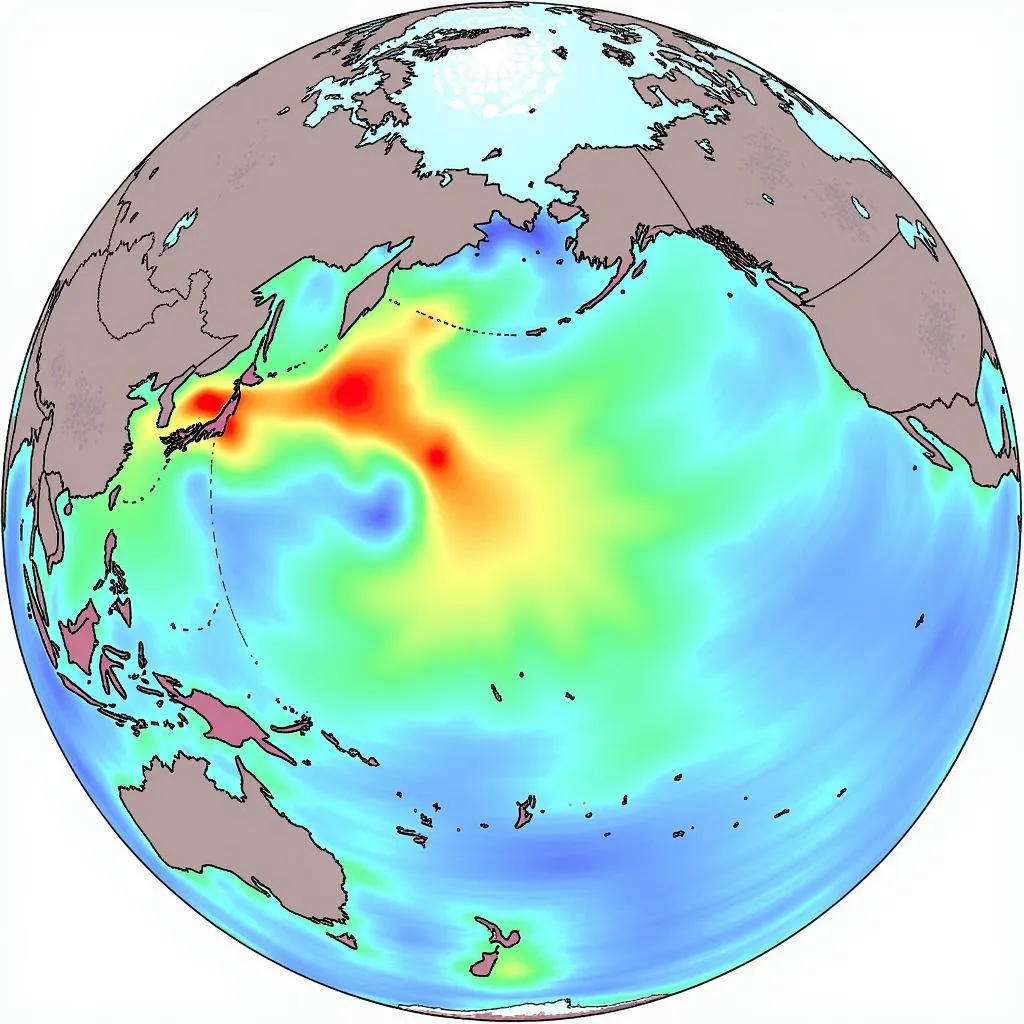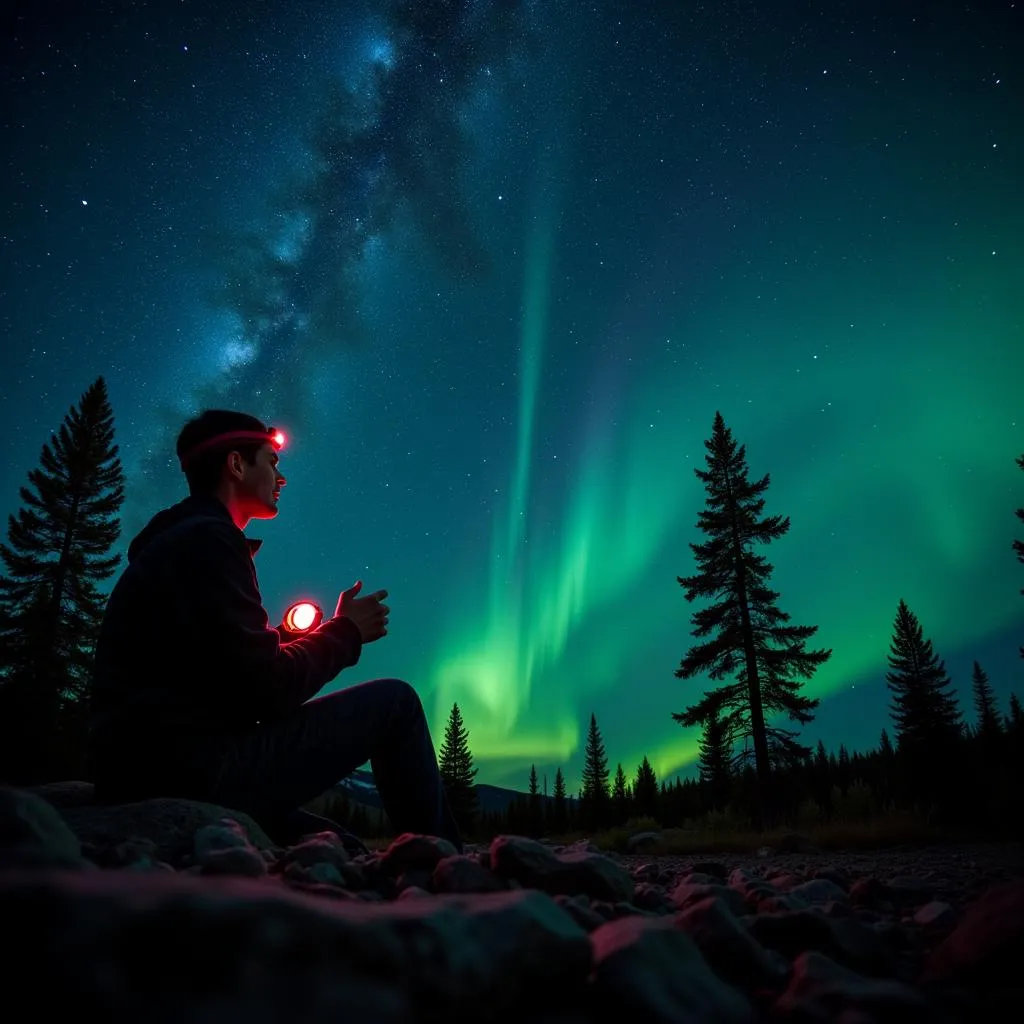Colorado, with its stunning mountain scenery and clear night skies, seems like the perfect place to catch a glimpse of the elusive Aurora Borealis. However, seeing the Northern Lights in Colorado is a rare treat. While not impossible, it requires a perfect storm of solar activity and ideal viewing conditions.
What Causes the Northern Lights?
The Northern Lights, or Aurora Borealis, occur when charged particles from the sun, carried on solar wind, collide with atoms in the Earth’s atmosphere. These collisions excite the atoms, causing them to release energy in the form of light, creating the mesmerizing green, purple, and red hues we associate with the aurora.
Why Are the Northern Lights Rare in Colorado?
The Earth’s magnetic field plays a crucial role in directing these charged particles towards the poles. The auroral oval, the area where auroras are most visible, usually sits over higher latitudes like Alaska and Canada. Colorado, situated at a lower latitude, is typically too far south for regular aurora sightings.
 Colorado's Position Relative to the Auroral Oval
Colorado's Position Relative to the Auroral Oval
When Can You See the Northern Lights in Colorado?
While predicting the aurora with absolute certainty is impossible, certain conditions increase your chances of witnessing this celestial display in Colorado:
- Strong Solar Activity: Major geomagnetic storms, caused by intense solar flares or coronal mass ejections, can push the auroral oval further south, making sightings in Colorado more likely.
- Solar Cycle Peaks: The sun goes through an 11-year cycle with periods of high and low activity. During solar maximums, the chances of strong geomagnetic storms and aurora sightings increase.
- Clear Dark Skies: Light pollution is a major obstacle to aurora viewing. Seek out locations far from city lights with unobstructed views of the northern horizon.
- Spring and Fall: The equinoxes (March and September) are statistically associated with higher auroral activity.
Tips for Seeing the Northern Lights in Colorado
- Monitor Space Weather Forecasts: Websites and apps like SpaceWeather.com provide real-time updates on geomagnetic activity and aurora forecasts. Look for a Kp index of 5 or higher for potential sightings in Colorado.
- Find a Dark Sky Location: Escape city lights and head to designated dark sky parks or high-altitude areas with minimal light pollution.
- Be Patient and Prepared: Auroras can be fickle. Be prepared to wait, dress warmly, and bring a comfortable chair or blanket.
 Stargazing in Colorado for Potential Aurora Sightings
Stargazing in Colorado for Potential Aurora Sightings
Can I See the Northern Lights in Denver?
Unfortunately, Denver’s light pollution makes it highly unlikely to see the Northern Lights from within the city. To increase your chances, you’ll need to drive a considerable distance away from urban light sources.
Where Can I Find More Information About Colorado’s Dark Sky Locations?
For a comprehensive list of dark sky parks and ideal stargazing spots in Colorado, you can visit the Colorado Tourism Office website.
Conclusion
While catching a glimpse of the Northern Lights in Colorado is a rare and special event, it is not entirely out of reach. By understanding the science behind the aurora, monitoring space weather, and seeking out optimal viewing conditions, you can increase your chances of witnessing this breathtaking phenomenon. Remember, patience and a little luck go a long way in the pursuit of the Northern Lights.
FAQs About Seeing the Northern Lights in Colorado
1. What time of year is best to see the Northern Lights in Colorado?
While auroras can occur year-round, spring and fall, particularly around the equinoxes, are statistically associated with higher auroral activity.
2. How far in advance do I need to check the aurora forecast?
Aurora forecasts are most reliable a few hours to a day in advance. Keep a close eye on space weather websites and apps for the most up-to-date information.
3. What color are the Northern Lights most likely to be in Colorado?
If the aurora is visible in Colorado, it’s most likely to appear as a faint green or white glow on the horizon.
4. Do I need any special equipment to see the Northern Lights?
The naked eye is sufficient for viewing the Northern Lights. However, a camera with a long exposure setting can capture the vibrant colors more vividly.
5. Are there any guided tours for Northern Lights viewing in Colorado?
Due to the rarity of auroras in Colorado, dedicated Northern Lights tours are uncommon. However, you can join stargazing tours or find local astronomy clubs for guidance on dark sky locations.
6. Can I see the Northern Lights tonight in Colorado?
To determine if the Northern Lights are visible tonight, check real-time aurora forecasts and space weather websites for current geomagnetic activity levels and viewing conditions.
7. Besides the Northern Lights, what else can I see in the night sky in Colorado?
Colorado boasts stunning night skies perfect for stargazing. You can observe constellations, planets, meteor showers, and even the Milky Way on a clear night away from light pollution.
For any assistance or further inquiries, reach us at:
Phone Number: 0373298888
Email: [email protected]
Address: 86 Cầu Giấy, Hà Nội.
Our customer service team is available 24/7 to assist you.

